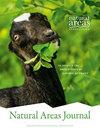城市生物多样性:新泽西草地的自然历史
IF 0.8
4区 环境科学与生态学
Q4 ECOLOGY
引用次数: 0
摘要
当许多人听到新泽西这个名字时,尤其是那些不熟悉花园州的人,这些词会让人联想到炼油厂、高速公路堵塞、城市蔓延和水道污染的刻板印象。在某些地方,图像并非完全不准确。哈肯萨克河下游的大片沼泽地——同名的草地——已经被广泛填充、渠化和开发了三个多世纪。新泽西州收费公路(95号州际公路)的两条交通繁忙的支线穿过湿地的中心地带,将垃圾填埋场、工厂、住宅和商业开发区以及现在似乎由单一芦苇(芦苇)种植主导的湿地带到了每年数百万游客的面前和中心。然而,正如作家Erik Kiviat和Kristi MacDonald在这本优秀的书中明确指出的那样,在曼哈顿以西不到五英里的城市基础设施中,一个充满活力和生物多样性的生态系统依然存在。草地是大陆冰川作用的结果。随着最后一次更新世冰川的推进,它凿出了一个南北走向的山谷。在其东侧,山谷被抵抗辉绿岩的岩床所限制,现在被公认为曼哈顿对面哈德逊河沿岸的帕利塞德。在它的西侧,山谷与邻近的排水沟(现在被帕赛克河占据)被一道砂岩山脊隔开。当冰川开始向北融化时,一条终端冰碛阻断了山谷向南向海洋的排水,形成了一个深层淡水蓄水库,即哈肯萨克冰川湖。从后退的冰川前缘向下游流入湖中的土壤沉积了一层层丰富、松散的沉积物。大约1万年前,该湖决口并开始排水。当时,草地变成了一个宽阔的森林山谷,许多蜿蜒的淡水支流穿过,汇入新形成的哈肯萨克河。经过几个世纪的海平面上升,大西洋侵占了山谷的较低部分,形成了哈肯萨克河河口。大约1000年前,海平面上升到接近当代的水平。不断上涨的洪水淹没了Meadowlands的大部分森林。森林被以灯芯草(Spartina spp.)为主的潮汐淡水和半咸水沼泽所取代,因此得名Meadowlands。成片的大西洋白雪松(Chamaecyparis thyoides)保留在土壤和水分条件允许树木生长的地方。潮汐沼泽地和雪松沼泽是主要的栖息地类型,直到荷兰和英国殖民者通过填充、焚烧、伐木、筑堤和挖沟对河口进行了改造。Meadowlands靠近快速发展的纽约市,这保证了他们城市化的命运。作者从两个地理背景来考虑草地:核心草地和大草地。核心区(79公里)包括宽阔的河口和以前的河口湿地以及哈肯萨克河沿岸的湿地填充物。这是可获得的生物信息最多的领域。核心区与州指定的Meadowlands区大致重合,这是一个规划管辖区。本文章由计算机程序翻译,如有差异,请以英文原文为准。
Urban Biodiversity: The Natural History of the New Jersey Meadowlands
When many people hear the name New Jersey—especially those who are not familiar with the Garden State—the words conjure a stereotypical image of a landscape of refineries, clogged freeways, urban sprawl, and polluted waterways. In some places, the image is not wholly inaccurate. The extensive marshlands along the lower reaches of the Hackensack River—the eponymous Meadowlands—have been extensively filled, channelized, and developed for over three centuries. Two very heavily traveled spurs of the New Jersey Turnpike (Interstate 95) cut through the heart of the wetlands, bringing the landfills, factories, residential and commercial development, and wetlands now dominated by seeming monocultures of common reed (Phragmites australis) front and center to millions of travelers every year. Yet, as authors Erik Kiviat and Kristi MacDonald make clear in this excellent book, a vibrant and biodiverse ecosystem persists amid the urban infrastructure located less than five miles west of Manhattan. The Meadowlands are a result of continental glaciation. As the final Pleistocene glacier advanced, it gouged a north–south oriented valley. On its eastern side, the valley was confined by the resistant diabase sill now recognized as the Palisades along the Hudson River opposite Manhattan. On its western side, the valley was separated from its neighboring drainage (now occupied by the Passaic River) by a sandstone ridge. As the glacier began to melt back northward, a terminal moraine blocked the valley’s southward drainage toward the ocean, forming a deep freshwater impoundment, Glacial Lake Hackensack. Soil carried downstream into the lake from the retreating glacial front deposited layers of rich, unconsolidated sediment. Approximately 10,000 years ago, the lake breached and began to drain. At that time, the Meadowlands became a broad, forested valley crossed by numerous meandering freshwater tributaries draining into the newly formed Hackensack River. After centuries of rising sea levels, the Atlantic Ocean encroached on the lower portions of the valley, forming the Hackensack River estuary. About 1000 years ago, sea level rose to near contemporary levels. The rising waters flooded and killed most of the Meadowlands’ forests. The forests were replaced by tidal fresh and brackish marshes dominated by cordgrasses (Spartina spp.)—hence the Meadowlands name. Patches of Atlantic white cedar (Chamaecyparis thyoides) remained where soil and moisture conditions allowed the trees to persist. Tidal marshlands and cedar swamps were the prevailing habitat types until the estuary was modified by Dutch and English colonists through filling, burning, lumbering, diking, and ditching. The Meadowlands’ proximity to the rapidly developing city of New York guaranteed their urbanized fate. The authors consider the Meadowlands in two geographic contexts: the Core Meadowlands and the Greater Meadowlands. The Core (79 km) encompasses the broad estuarine and formerly estuarine wetlands and wetland fill alongside the Hackensack River. This is the area for which the most biological information is available. The Core is roughly coincident with the state-designated Meadowlands District, a planning jurisdiction.
求助全文
通过发布文献求助,成功后即可免费获取论文全文。
去求助
来源期刊

Natural Areas Journal
环境科学-林学
CiteScore
1.70
自引率
11.10%
发文量
50
审稿时长
>36 weeks
期刊介绍:
The Natural Areas Journal is the flagship publication of the Natural Areas Association is the leading voice in natural areas management and preservation.
The Journal features peer-reviewed original research articles on topics such as:
-Applied conservation biology-
Ecological restoration-
Natural areas management-
Ecological assessment and monitoring-
Invasive and exotic species management-
Habitat protection-
Fire ecology.
It also includes writing on conservation issues, forums, topic reviews, editorials, state and federal natural area activities and book reviews. In addition, we publish special issues on various topics.
 求助内容:
求助内容: 应助结果提醒方式:
应助结果提醒方式:


